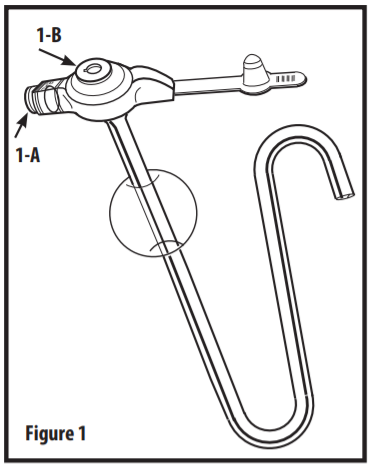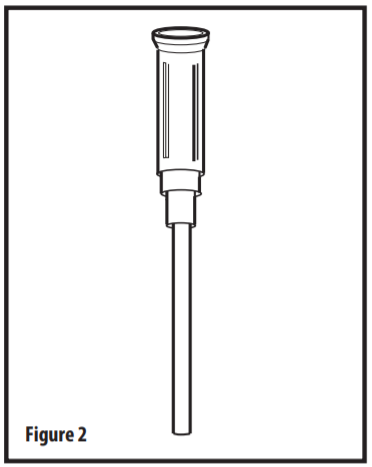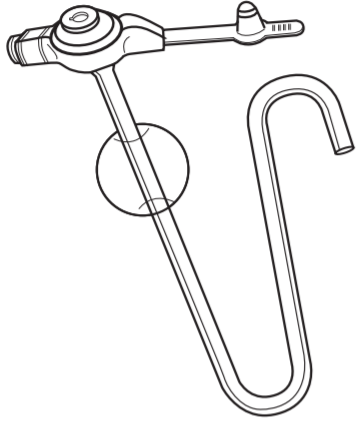-
Catheters (6,800+)
- Angiocatheters (50+)
- Closed System Catheters (300+)
- External Catheters (620+)
- Hydrophilic Catheters (140+)
- IV Catheters (1,200+)
- Non-Hydrophilic (20+)
- Plastic Catheters (200+)
- Rubber Catheters (700+)
- Silicone Catheters (770+)
- Ureteral Catheters (100+)
- Urethral Catheters (450+)
- Venous Catheters (240+)
-
Coronavirus (20,000+)
- Bacterial Filters (170+)
- Bleach (360+)
- Coveralls (500+)
- Disinfectant Wipes (350+)
- Face Shields (200+)
- Gloves (8,000+)
- Gowns (2,300+)
- Isopropyl Alcohol (170+)
- IV Therapy (2,000+)
- Masks (3,700+)
- Pulse Oximeters (250+)
- Sanitizer (670+)
- Scrubs (20,000+)
- Soap (1,500+)
- Stethoscopes (700+)
- Thermometers (950+)
- Custom Kits
- Dental (14,000+)
- Gloves (8,000+)
-
Gynecology & Urology (1,000+)
- Bed Side Drainage Bags (350+)
- Circumcision (150+)
- Cord Clamps and Clippers (60+)
- Disposable Vaginal Specula (60+)
- Enema Bags (30+)
- External Catheters (620+)
- Foley Catheters and Trays (1,200+)
- Identification (1100+)
- Leg Bag Accessories (10+)
- Leg Bags (280+)
- Reusable Vaginal Specula (900+)
- Specimen Collection (200+)
- Tubing & Connectors (17,000+)
- Urinals / Bed Pans (1,300+)
- Urine Collectors (60+)
- Urological Irrigation Products (10+)
- Vaginal Specula Illumination (2+)
- Systems (11,000+)
- Hygiene (1,000+)
- Incontinence (1,000+)
-
Infection Control (2,500+)
- Bacterial Filters (170+)
- Bleach (360+)
- Coveralls (500+)
- Disinfectant Wipes (350+)
- Face Shields (200+)
- Gloves (8,000+)
- Gowns (2,300+)
- Iodine (460+)
- Isopropyl Alcohol (170+)
- IV Therapy (2,000+)
- Masks (3,700+)
- Pulse Oximeters (250+)
- Sanitizer (670+)
- Soap (1,500+)
- Stethoscopes (700+)
- Thermometers (950+)
- Infusion All (2,000+)
- IV Bags - Empty (300+)
- IV Bags - Filled (100+)
- Masks (3,800+)
-
Medical Apparel (23,000+)
- Arm Sleeves (240+)
- Beard Covers (20+)
- Bouffant Caps (200+)
- Compression Socks (80+)
- Coveralls (500+)
- Disposables (100+)
- Isolation Gowns (360+)
- Lab Coats (2,200+)
- Lab Jackets (300+)
- Patient Gowns (300+)
- Procedural Gowns (230+)
- Scrubs (20,000+)
- Shoe Covers (270+)
- Surgeon Caps (40+)
- Surgical Gowns (70+)
- Surgical Hoods (20+)
- Surgical Masks (330+)
- Ostomy (400+)
-
PPE (20,000+)
- Bacterial Filters (170+)
- Bleach (360+)
- Coveralls (500+)
- Disinfectant Wipes (350+)
- Face Shields (200+)
- Gloves (8,000+)
- Gowns (2,300+)
- Isopropyl Alcohol (170+)
- IV Therapy (2,000+)
- Masks (3,700+)
- Pulse Oximeters (250+)
- Sanitizer (670+)
- Scrubs (23,000+)
- Soap (1,500+)
- Stethoscopes (700+)
- Thermometers (950+)
- Respiratory (500+)
- Sanitizer (600+)
- Surgical Supplies (14,000+)
- Sutures (7,500+)
- Syringes & Needles (14,000+)
-
Wound Care (5,000+)
- ABD Pads (100+)
- Adhesive Bandages (650+)
- Advanced Wound Care (400+)
- Applicators (6,700+)
- Burn care (240+)
- Dressings (7,500+)
- Elastic Bandages (1,600+)
- Gauze (3,300+)
- Ice / Heat Packs (280+)
- Medical Tape (820+)
- Non-Adhering Dressings (100+)
- Ointment & Solutions (450+)
- Self-Adherent Wraps (200+)
- Sponges (2,400+)
- Staple & Suture Removal (1,500+)
- Tegaderm (450+)
- Transparent Dressing (800+)
- Wound Care Prep (120+)
- Wound Cleansers (100+)
- Sales & Deals (100+)
- 3M (4,200+)
- Alaris Medical (600+)
- Amsino International (550+)
- Avanos Medical (40+)
- B Braun (1,500+)
- Baxter (750+)
- BD (2,800+)
- BSN Medical (2,000+)
- Cables & Sensors (3,200+)
- C.R. Bard (4,200+)
- Cardinal Health (6,800+)
- CareFusion (2,100+)
- ConMed (1,500+)
- Cook Medical (600+)
- Covidien (9,500+)
- DeRoyal (6,000+)
- Dukal (1,300+)
- Ethicon (4,100+)
- GE Healthcare (1,000+)
- Hartmann (600+)
- Hospira (530+)
- ICU Medical (1,700+)
- Masimo (170+)
- Medline (54,000+)
- Midmark (2,500+)
- Roche (300+)
- Smiths Medical (4,000+)
- Sunset Healthcare (450+)
- TrueCare Biomedix (20+)
- View All Brands (5,000+)

Avanos Medical 0230-14-2.5 - MIC-KEY Jejunal Feeding Tube, Low-Profile - 14 Fr, 2.5 cm, Each
Avanos 0230-14-2.5 MIC-KEY Jejunal Feeding Tube
The MIC-KEY Jejunal Feeding Tube is indicated for patients requiring jejunal feeding only, but who want an inconspicuous external segment. Today, our MIC-KEY brand of enteral feeding tubes is well-recognized and accepted among the healthcare professionals for intermediate and long-term feeding applications.
Quality Design for Optimal Use Avanos MIC-KEY Jejunal Feeding Tube Kits includes high-clarity silicone construction and is designed for maximum visibility and drapability. The tubes also include ventilated SECUR-LOK ring, the external retention mechanism designed to allow the circulation of air around the stoma site and the reduction of tube pressure 360 from the sides of the stoma wall. With a low-profile design and a trimmable and tapered distal tip, your patients will have an optimal experience.Available Extension Sets and compatible with ENFIT Connectors.
Avanos 0230-14-2.5 MIC-KEY Jejunal Feeding Tube Features
- Medical grade silicone construction
- Low-profile design
- Silicone internal retention balloon
- Gastric decompression port
- Multiple Gastric and Jejunal exit ports
- Radiopaque weighted Jejunal portion
- SECUR-LOK extension set connector mechanism
- Tapered distal tip
- Radiopaque stripe
Indications For Use of Avanos 0230-14-2.5 MIC-KEY Jejunal Feeding Tube
The AVANOS MIC-KEY Low-Profile Jejunal Feeding Tube provides for delivery of enteral nutrition into the distal duodenum or proximal jejunum.
The AVANOS MIC-KEY Low-Profile Jejunal Feeding Tube is indicated for use in patients who cannot absorb adequate nutrition through the stomach, who have intestinal motility problems, gastric outlet obstruction, severe gastroesophageal reflux, are at risk of aspiration, or in those who have had previous esophagectomy or gastrectomy.
 |  |
Contraindications
Contraindications for placement of a jejunal feeding tube include, but are not limited to ascites, colonic interposition, portal hypertension, peritonitis and morbid obesity.
Warning: Do not reuse, reprocess, or resterilize this medical device. Reuse, reprocessing, or resterilization may 1) adversely affect the known biocompatibility characteristics of the device, 2) compromise the structural integrity of the device, 3) lead to the device not performing as intended, or 4) create a risk of contamination and cause the transmission of infectious diseases resulting in patient injury, illness, or death.
Placement
The AVANOS MIC-KEY Low-Profile Jejunal Feeding Tube may be placed percutaneously under fluoroscopic or endoscopic guidance or as a replacement to an existing device using an established stoma tract.
Caution: A gastropexy must be performed to affix the stomach to the anterior abdominal wall, the feeding tube insertion site identified, stoma tract dilated and measured prior to initial tube insertion to ensure patient safety and comfort. The length of the tube may be adjusted using a razor blade or scalpel. Ensure that the cut is smooth and blunt and length sufficient. Should be sufficient to be placed 1015 cm beyond the Ligament of Treitz.
Caution: Do not use the retention balloon of the feeding tube as a gastropexy device. The balloon may burst and fail to attach the stomach to the anterior abdominal wall.
Avanos MIC-KEY Jejunal Feeding Tube Preparation
1. Select the appropriate size MIC-KEY Jejunal Feeding Tube, remove from the package and inspect for damage.
2. Using the 6 ml Luer slip syringe contained in the kit, inflate the balloon with 5 ml sterile or distilled water through the balloon port (Fig 1-A).
3. Remove the syringe and verify balloon integrity by gently squeezing the balloon to check for leaks. Visually inspect the balloon to verify symmetry. Symmetry may be achieved by gently rolling the balloon between the fingers. Reinsert the syringe and remove all the water from the balloon.
4. Using a 6 ml Luer slip syringe, flush water through the jejunal port (Fig 1-B) to verify patency.
5. Lubricate the distal end of the tube with water-soluble lubricant. Do not use mineral oil or petroleum jelly.
6. Generously lubricate the jejunal lumen with water-soluble lubricant. Do not use mineral oil or petroleum jelly.
7. Insert the introducer cannula (Fig 2) into the Jejunal port until the hub is in contact with the Jejunal feeding port and the introducer cannula is clearly visible inside the tube. The introducer cannula opens the one-way valve and protects it from damage by the guidewire.
Daily Care & Maintenance Checklist of Avanos MIC-KEY Jejunal Feeding Tube
Assess the patient
Assess the patient for any signs of pain, pressure or discomfort.
Assess the stoma site
Assess the patient for any signs of infection, such as redness, irritation, edema, swelling, tenderness, warmth, rashes, purulent or gastrointestinal drainage.
Assess the patient for any signs of pressure necrosis, skin breakdown or hypergranulation tissue.
Clean the stoma site
Use warm water and mild soap.
Use a circular motion moving from the tube outwards.
Clean sutures, external bolsters and any stabilizing devices using a cottontipped applicator.
Rinse thoroughly and dry well.
Assess the tube
Assess the tube for any abnormalities such as damage, clogging or abnormal discoloration.
Clean the feeding tube
Use warm water and mild soap being careful not to pull or manipulate the tube excessively.
Rinse thoroughly, dry well.
Clean the jejunal, gastric and balloon ports
Use a cotton tip applicator or soft cloth to remove all residual formula and medication.
Do not rotate the external bolster
This will cause the tube to kink and possibly lose position.
Verify placement of the external bolster
Verify that the external bolster rests 23mm above the skin.
Flush the feeding tube
Flush the feeding tube with water using a catheter tip or slip tip syringe every 46 hours during continuous feeding, anytime the feeding is interrupted, or at least every 8 hours if the tube is not being used. Flush the feeding tube after checking gastric residuals. Flush the feeding tube before and after medication administration. Avoid using acidic irrigants such as cranberry juice and cola beverages to flush feeding tubes
Avanos MIC-KEY Jejunal Feeding Tube Balloon Maintenance
Check the water volume in the balloon once a week.
Insert a slip tip syringe into the balloon inflation port and withdraw the fluid while holding the tube in place. Compare the amount of water in the syringe to the amount recommended or the amount initially prescribed and documented in the patient record. If the amount is less than recommended or prescribed, refill the balloon with the water initially removed, then draw up and add the amount needed to bring the balloon volume up to the recommended and prescribed amount of water. Be aware as you deflate the balloon there may be some gastric contents that can leak from around the tube. Document the fluid volume, the amount of volume to be replaced (if any), the date and time.
Wait 1020 minutes and repeat the procedure. The balloon is leaking if it has lost fluid, and the tube should be replaced. A deflated or ruptured balloon could cause the tube to dislodge or be displaced. If the balloon is ruptured, it will need to be replaced. Secure the tube into position using tape, then follow facility protocol and/or call the physician for instructions. Note:Refill the balloon using sterile or distilled water, not air or saline. Saline can crystallize and clog the balloon valve or lumen, and air may seep out and cause the balloon to collapse. Be sure to use the recommended amount of water as over-inflation can obstruct the lumen or decrease balloon life and under-inflation will not secure the tube properly.
MRI Safety Information of Avanos MIC-KEY Jejunal Feeding Tube
Non-clinical testing has demonstrated the Low-Profile (MIC-KEY) Enteral Feeding Tube System is MR Conditional. A patient with this device can be safely scanned in an MR system meeting the following conditions:
- Static magnetic field of 1.5 Tesla or 3 Tesla
- Maximum spatial field gradient of 1,960 G/cm (19.6 T/m) or less.
- Maximum MR system reported, whole body averaged specific absorption rate (SAR) of < 2 W/kg (Normal Operating Mode)
Avanos MIC-KEY Jejunal Feeding Tube 0230-14-2.5 Specifications
| Diameter (Fr) | 14 |
| Tube Tip Type | Trimmable Distal Tip |
| Jejunal Length (cm) | 51 |
| Product Brand | MIC-KEY |
Avanos MIC-KEY Jejunal Feeding Tube 0230-14-2.5 Device Characteristics
| What MRI safety information does the labeling contain? | MR Conditional |
| Device required to be labeled as containing natural rubber latex or dry natural rubber (21 CFR 801.437): | No |
| Device labeled as ""Not made with natural rubber latex"": | Yes |
| For Single-Use: | No |
| Prescription Use (Rx): | No |
| Over the Counter (OTC): | No |
| Kit: | No |
| Combination Product: | No |
| Human Cell, Tissue or Cellular or Tissue-Based Product (HCT/P): | No |

Avanos Medical #0230-14-2.7, MIC-KEY Jejunal Feeding Tube, Low-Profile - 14 Fr, 2.7 cm, Each
$292.86 EACH

Avanos Medical #0230-14-1.0, MIC-KEY Jejunal Feeding Tube, Low-Profile - 14 Fr, 1.0 cm, Each
$292.86 EACH

Avanos Medical #0230-14-4.5, MIC-KEY Jejunal Feeding Tube, Low-Profile - 14 Fr, 4.5 cm, Each
$292.86 EACH

Avanos Medical #0230-14-0.8, MIC-KEY Jejunal Feeding Tube, Low-Profile - 14 Fr, 0.8 cm, Each
$292.86 EACH


